Finding STEM in Piles of Dirt
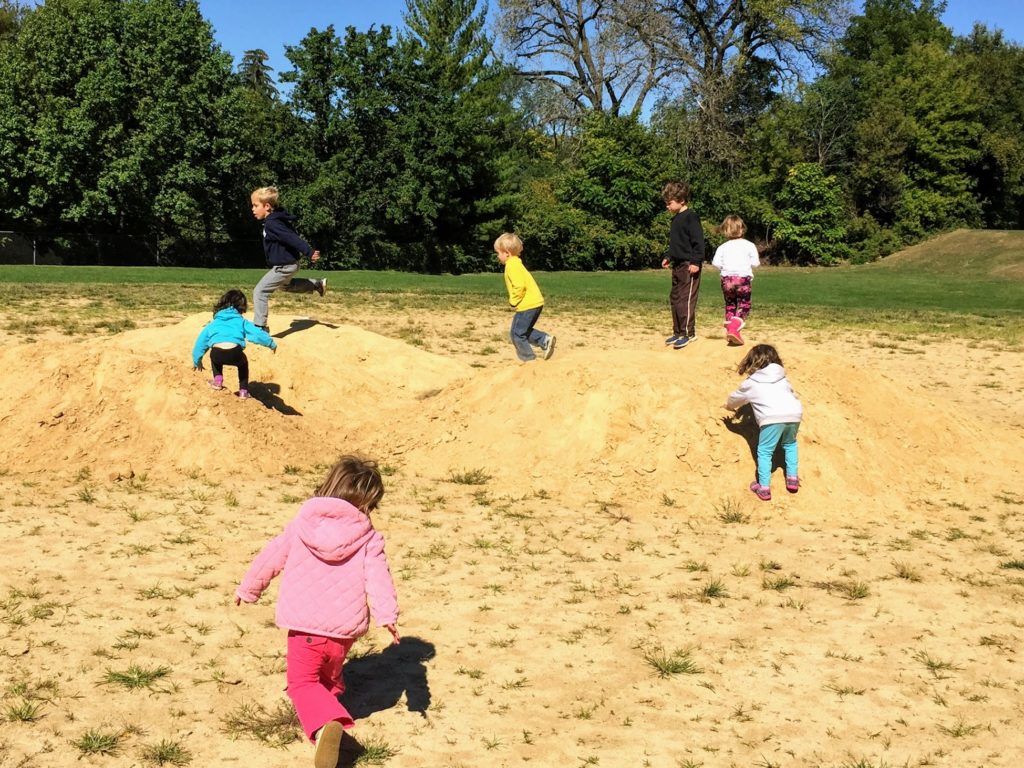
On a recent walk around the neighborhood, we stumble into a scientific gold mine: piles of sand, silt and clay that have not yet been graded and groomed into a baseball diamond.
“Look! What is that?” asks one child whose curiosity is clearly piqued.
“Can we play on those piles of dirt?” another child pipes in excitedly. “Please, can we?”
Always a sucker for child-led learning, I agree to take a break from our walk and engage in some impromptu scientific investigations. Those piles will knock off some early science standards in no time. Not that anyone in this crowd cares about early learning standards. They just want to play in the dirt—and off they go!
Little do I know how much time we will spend investigating those piles, testing our risk-taking tolerance and gaining an understanding of new science concepts.
Did you know that the term “science” comes from the Latin word “scientia,” which means knowledge? If we think of science as a way for children to gain knowledge, maybe we can slow down, forget about our scheduled activities for a little while and give children the time to engage in hands-on investigations of the world around them.
Children retain information when they glean it from hands-on experiences. If children are interested in something in their environment, and they can touch it, their curiosity will lead them on a learning adventure!
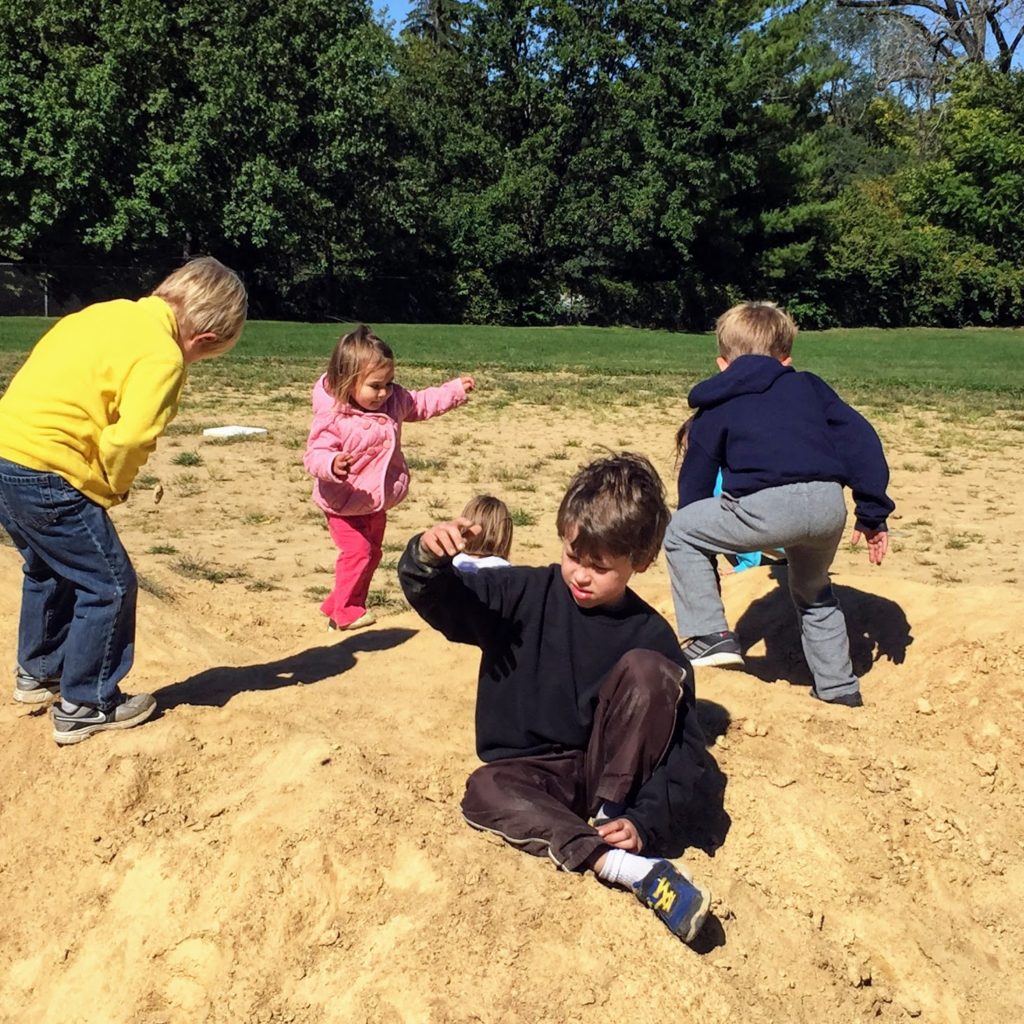
Today, the children’s curiosity is working overtime. This is not the dirt that they are used to digging in—and the questions tumble out in rapid succession.
Studies show that preschoolers ask as many as 200-400 questions a day. But, by middle school, that number plummets. We must spark curiosity and cultivate a sense of wonder in young children so that they will continue to explore and ask questions as they grow older!
“Why does this dirt feel so soft and then get harder when you push on it?” asks Alecia.
“Look! If you make a fist with dirt, the dirt stays in a ball when you open your hand!” Owen proclaims to anyone who will listen.
Almost immediately, Lisa is at his side, observing Owen’s experiment and testing out his findings on her own.
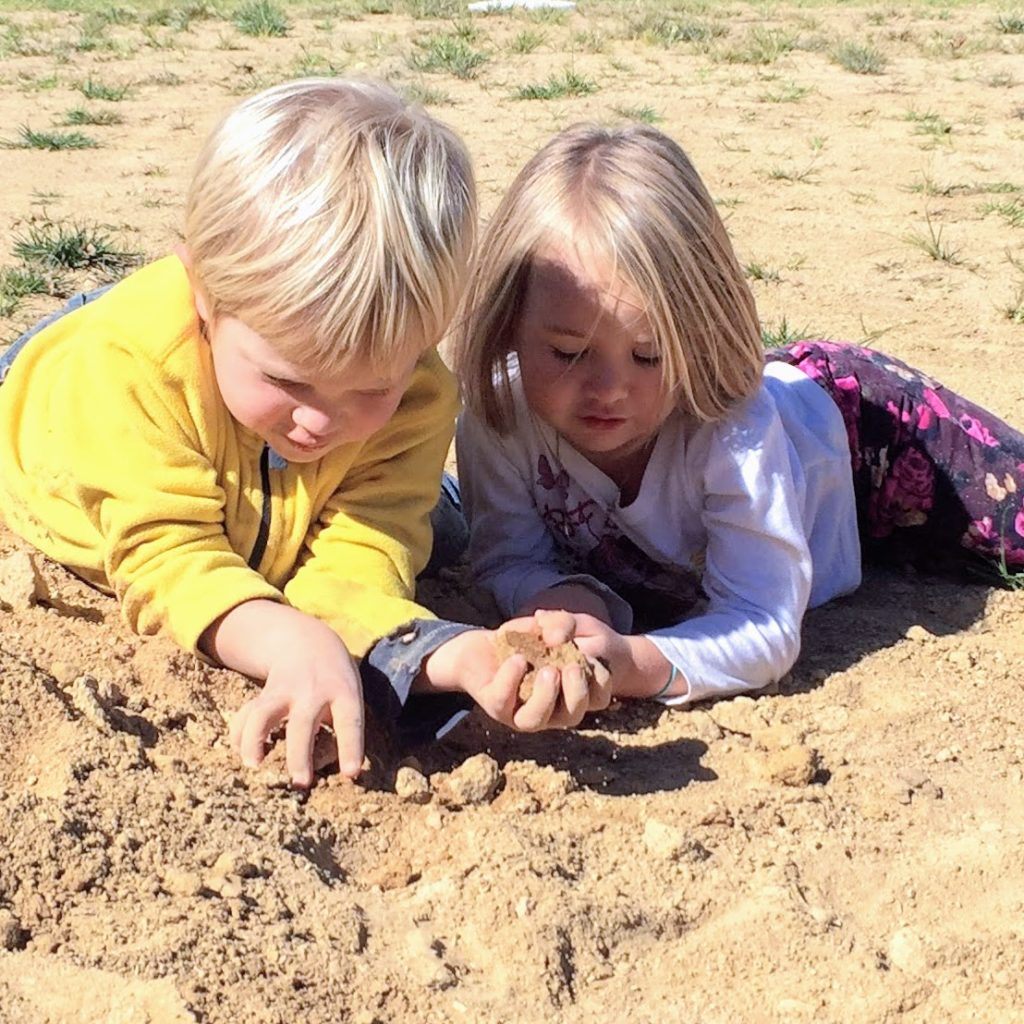
Meanwhile, other friends are mesmerized by the small clouds of dust that they can create when they stomp on the dirt piles. I see them slowing down and making observations.
The children scatter among the piles, exploring and investigating these newfound wonders. Early science activities like these can nurture a child’s natural sense of adventure and investigation.
Scientific investigations also encourage children to be persistent problem solvers as they test out their predictions, gather data and develop a first-hand understanding of the world.
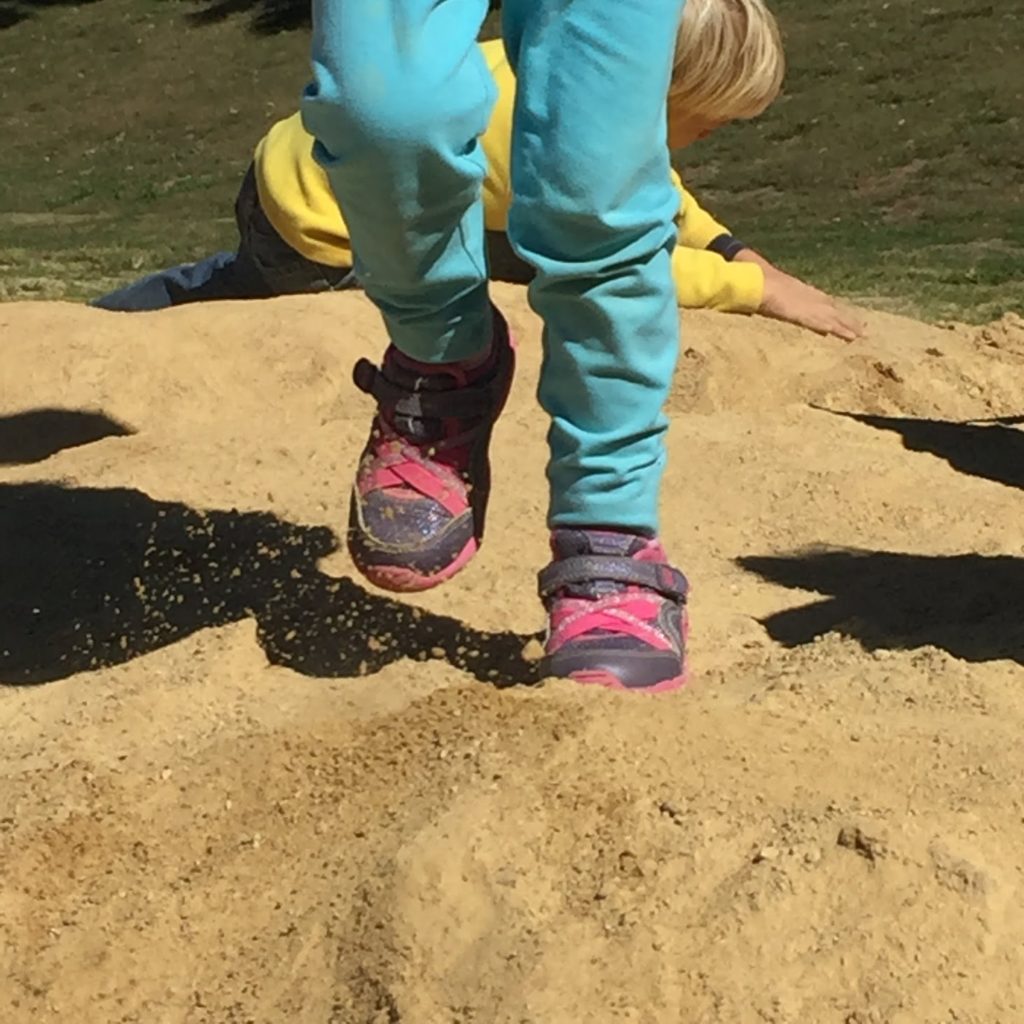
The children are endlessly creative in their investigations.
“You can also throw it in the air and it makes a cloud of smoke!” observes Annika as she tosses a handful of the dirt into the gentle breeze of this unexpectedly joyous morning.
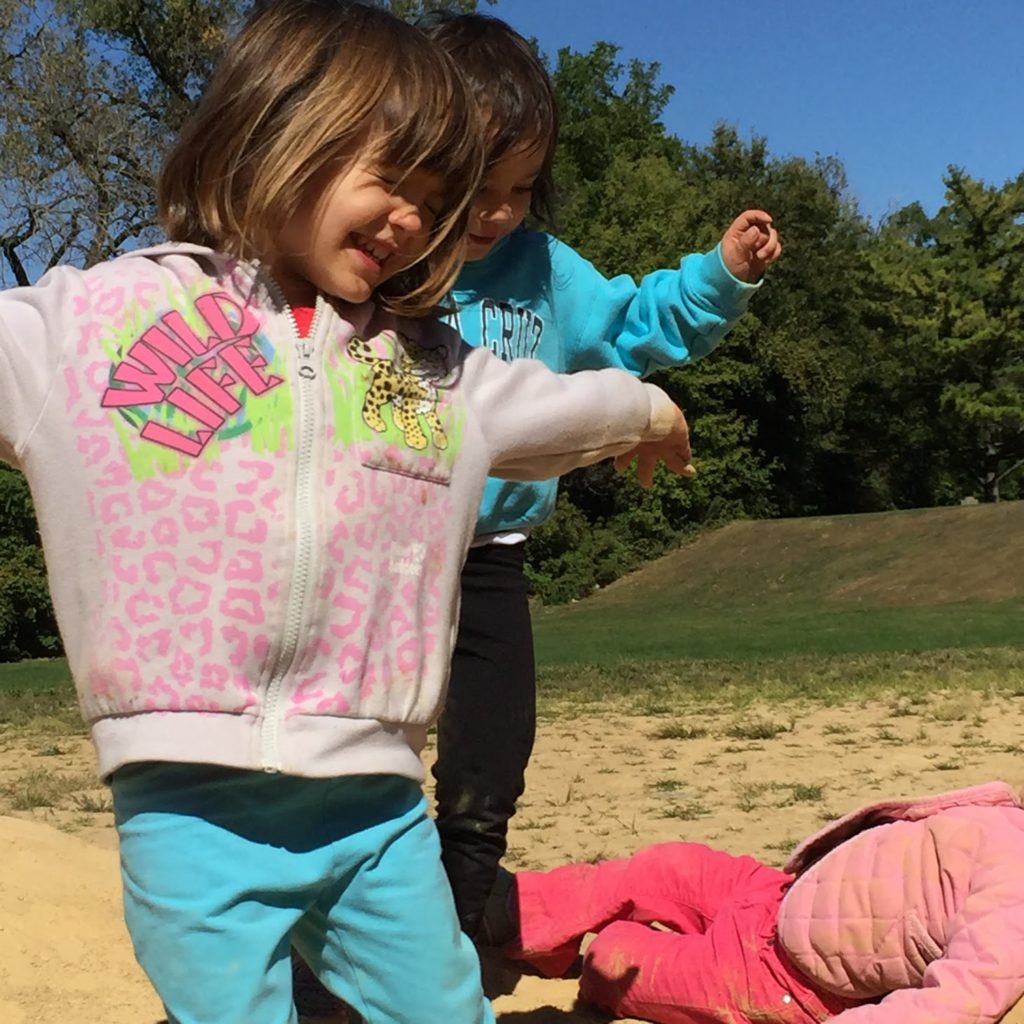
“Oops! Sorry, Alecia. Are you okay?” The wind has carried the dust from Annicka’s exuberant toss into the eyes of a group of young onlookers.
Alecia is okay. She giggles to show that there aren’t any hard feelings, but I don’t see any more dirt thrown in the air for the rest of the day. This is a perfect example of “natural consequences” teaching life lessons better than any lecture from an adult!
Young children learn a little bit about something new each day—and each new discovery opens doors to exciting new avenues of scientific exploration.
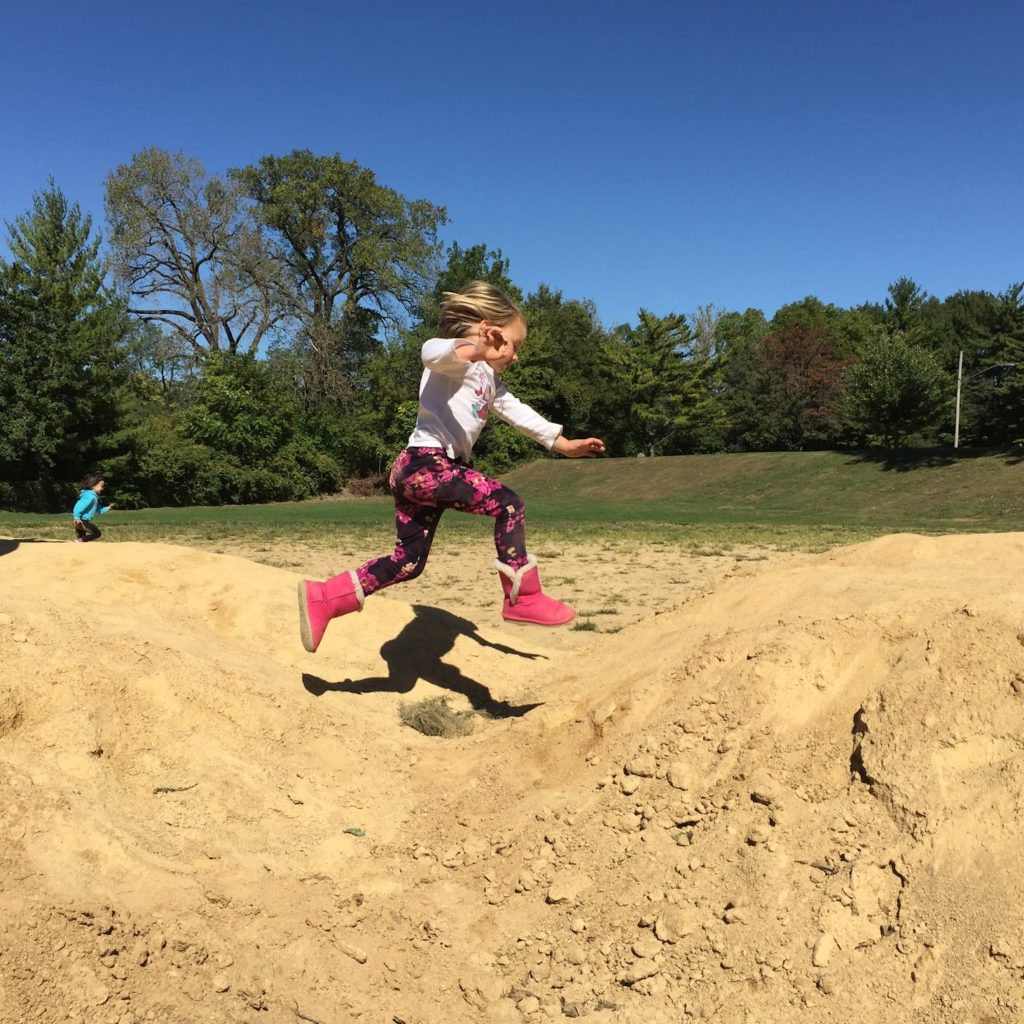
Soon we are engaged in discussions about the height of each hill and how it feels to run up the hills from different angles.
And then it happens. One child leaps from the top of one hill to the top of another—and a whole new set of scientific investigations is set into motion.
Some of the children begin to mark their landings to see who has made the best jump. Suddenly we are measuring and predicting, collecting data, collaborating and strategizing.
The children also explore cause and effect as they discuss different take-off techniques and what happens when they use their arms to propel themselves forward.

These children aren’t conducting complex scientific experiments, but they are learning the basic scientific principles of observing, predicting and measuring. These emerging skills will enable our budding scientists to learn more about the world they inhabit.
Activities like our dirt-pile investigation can help children develop a love of the outdoors and teach them that science, math and other STEM adventures can be an exciting part of their everyday play.
On the walk home, we discuss what we learned on the dirt piles.
“When we were jumping over those piles, that was science, right? asks Harper, looking around for confirmation.
“I think it was math because we were kind of measuring where we landed,” reasons Marcus.
“But we also changed how we tried to jump,” adds Veronica.
The conversation is casual but deep as the children use their critical and analytical thinking skills to process the learning that came so easily through play.
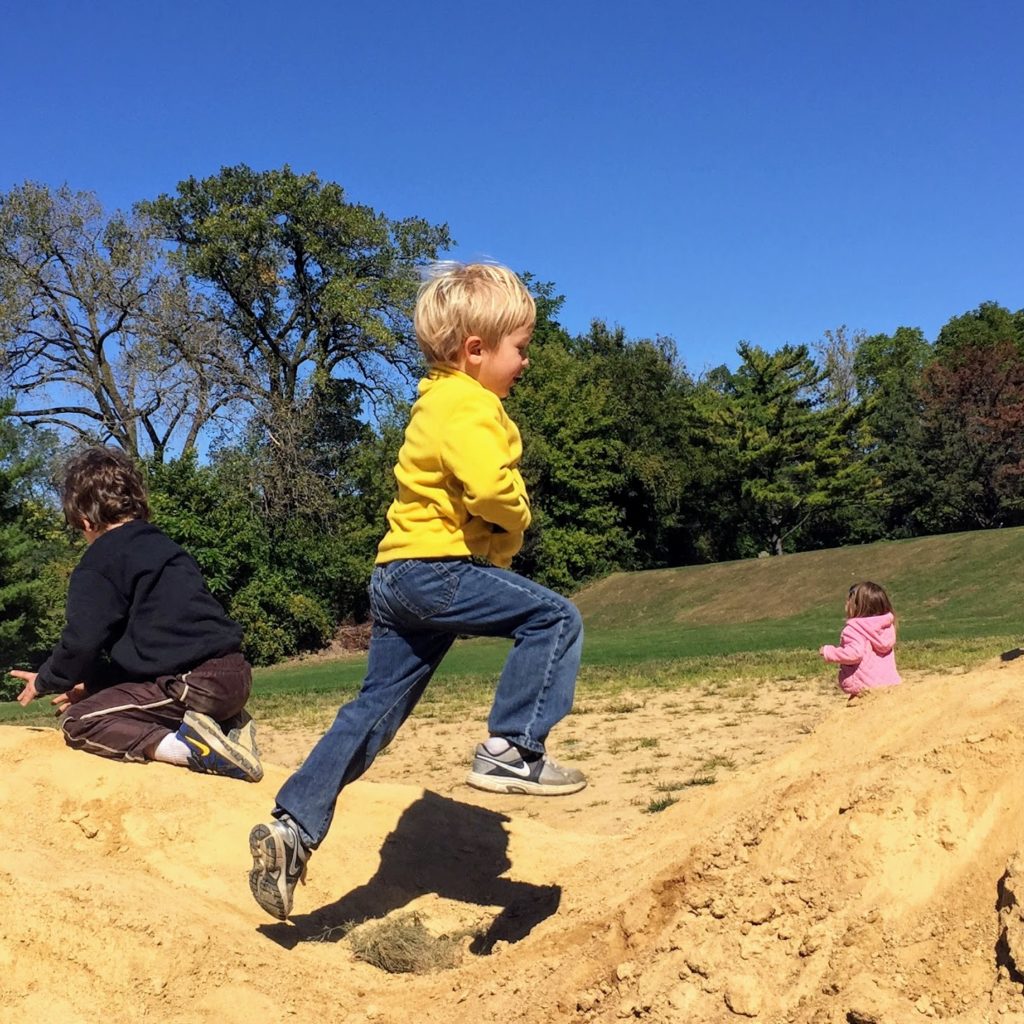
Today’s lesson may have looked like a bunch of little kids playing on dirt piles in the park. But when we give children the time to touch the earth, collaborate with friends and PLAY with the materials that they encounter in local parks and preserves, Mother Nature makes it easy to meet our early learning standards.
So don’t be afraid to take a dive into the great outdoors for your next STEM adventure!
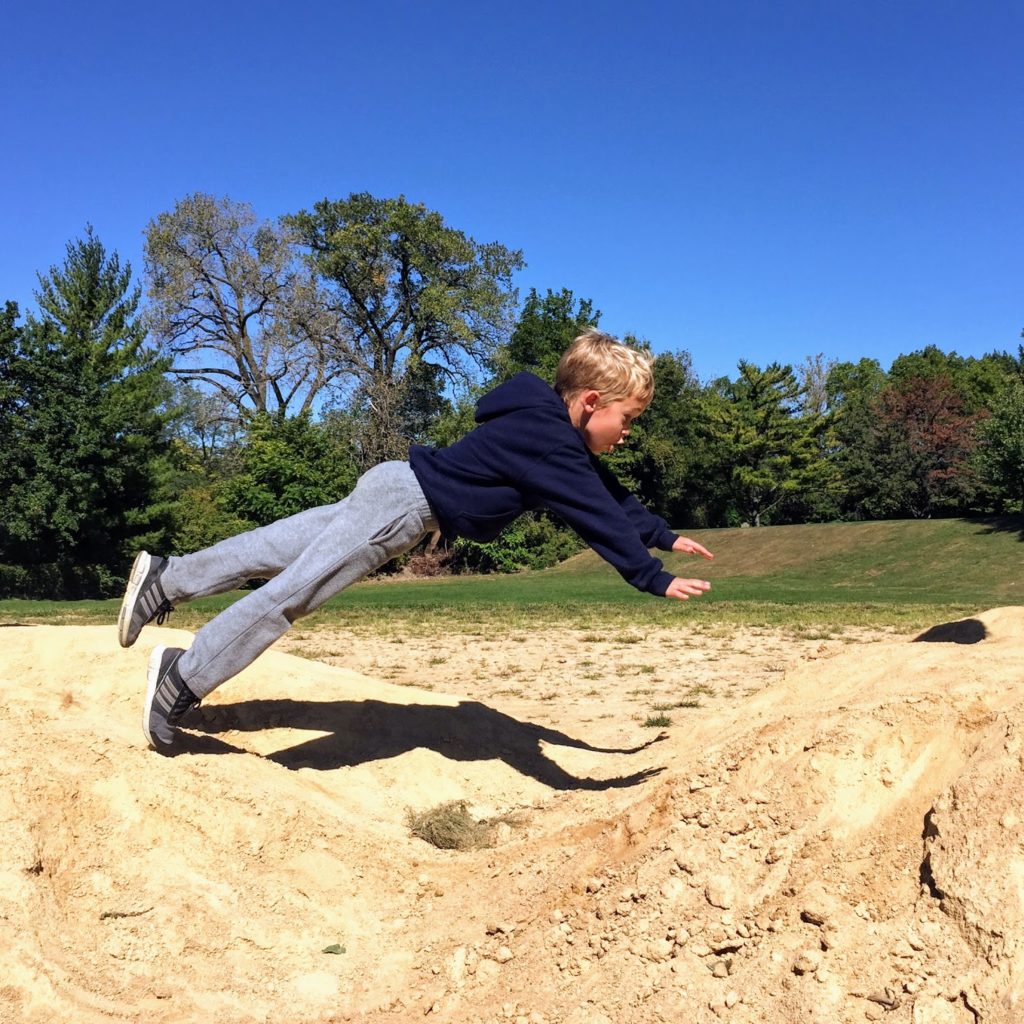
Looking for some free activities to awaken a love of science in your early learners? Be sure to visit our Early Science Matters lessons page. After you finish each lesson, be sure to click on the Connect with Families button to download and customize a letter with information about the lesson, as well as activities that families can engage in at home to extend the learning.
Here are two early science lessons to get you started:
Found interesting.
What a fun impromptu activity! Some place in their community where they can explore and investigate and get dirty.
Great concept of a lesson plan to incorporate the earth concept and fun.
While getting dirty, we could also talk about whether or not the dirt is living or non-living and how dirt is necessary for plants to thrive.
It is fun to explore what different kinds of dirt can do, like be molded and become dust when you throw it.
good idea. lots of hands on experience
having fun and getting dirty ,,,leanring happens !
I love the un-planned nature of this activity! Just curious minds investigating something in their world, not even really understanding they are investigating science concepts! to them, they are just playing.
Fun hands on activity. Comparing these piles to ones they are familiar with- what is the same and what is different about them (feel, look, smaell, what you can do with them, what is found in them, etc.
Great idea! Lots of fun for our kiddos!!
Love this! Lots of hands-on experience for our kiddos!
Love all of the hands on Experiences!
Great ideas for an outside exploration
i love how this just pops up in the middle of a walk and the best part is that they think they are just playing. i love how you can explore with dry or by adding water and seeing how it could be dusty or it could be molded in your hand and make a ball
This is good way to get children out and use their senses and learn about Earth and the environment around them
It’s so important for children to be able to investigate dirt. Don’t worry about them getting muddy- it’s part of growing up!
This is perfect for an earth air and water natural science lesson – I love the children-led investigations! They experimented with dirt and made their observations about it first!
I liked how the children led the investigations . Great ideas!
It gives the children a chance to feel the difference between the dirt outside and what may usually be in a sensory table in side the classroom. Also they are able to explore and see what they can find in the dirt.